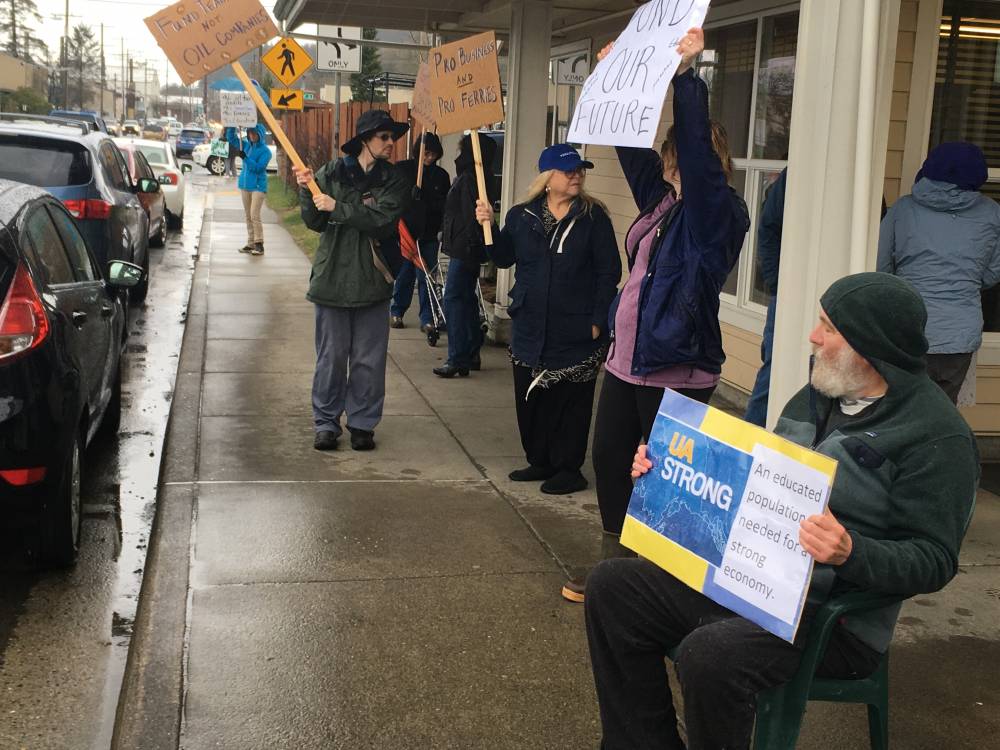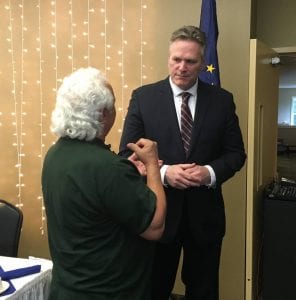
Gov. Mike Dunleavy’s Monday visit to Ketchikan included a 90-minute question-and-answer session with residents. Outside about 30 demonstrators picketed the venue.
One of the picketers standing in the cold and blowing rain was Frankie Urquhart. Her handmade sign read: Fund Our Future.
“My concerns are that the Alaska that we know and love and the reason that we all have chosen Alaska as our home is not going to be the home that any of us recognize or will be able to live in anymore,” she said. “And the governor needs to know this.”
Inside the Sunny Point Conference Center, about 150 attended the lunch event hosted by the Ketchikan Chamber of Commerce. The governor started with a history lesson.
“I’m going to take us back to the ‘60s. We were a state of 250,000, maybe 300,000, and our budgets back in the mid- to late 60s were about $175 million a year,” he said. “Our budget today is $5.7 billion.”
When considering inflation, the value of that mid-1960s budget number would be about $1.4 billion today. Alaska’s current population has almost tripled since then.
Dunleavy told the Chamber audience that as Alaska gained oil wealth, spending has increased at an unsustainable rate. That, he said, is why the state now faces a deficit. Dunleavy said his proposed budget addresses the problem from a spending perspective rather than a revenue perspective.
That means big budget cuts.
“And there’s no doubt that approach is causing a great discussion in the State of Alaska: What is it that we want to pay for? How do we want to pay for it? When do we want to pay for it?” he said. “And that’s part of this discussion today.”

The governor’s presentation took about half an hour. After that, he took questions from the audience. Kim Hodne, who volunteered for Dunleavy’s campaign in Ketchikan, said that Dunleavy’s proposed budget is dividing the state into winners and losers: with huge cuts from the ferry system and education.
“Why can it not be 20-percent across the budget for everybody?” he asked. “And that 20-percent across the budget also means the oil companies pony up their 20-percent. It’s easy to pick low-hanging fruit in the way of taxes and what can be done simply. But quite honestly, governor, 20-percent across the board – everybody pays the same.”
Dunleavy responded that he’s not trying to divide the state; his administration is targeting the state’s largest expenses.
He said more spending hasn’t improved outcomes, and he wants to change the pattern in state government by bringing a new perspective.
We will have a follow up report with more details from the governor’s presentation, and questions from audience members.








